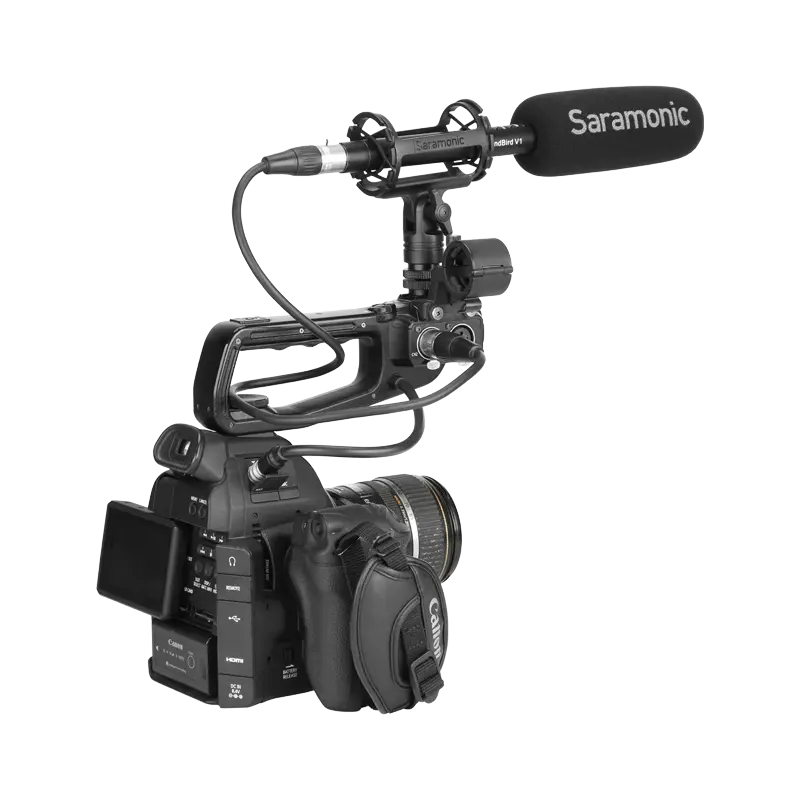Unlock Crystal Clear Sound: The Ultimate Guide to Choosing Your Perfect Shotgun Microphone!
Shotgun microphones are essential tools in the world of audio recording, renowned for their ability to capture sound with remarkable clarity while minimizing background noise. These highly directional microphones are designed to pick up sound from a specific area, making them an ideal choice for filmmakers, podcasters, and sound engineers alike. Whether you're shooting a film on a bustling street or recording a crisp podcast in a quiet studio, choosing the right shotgun microphone can significantly enhance the quality of your audio. In this article, we'll explore the ins and outs of shotgun microphones, helping you navigate the options available and select the perfect one for your specific needs.

Understanding Shotgun Microphones
Shotgun microphones operate on a unique design principle that allows them to isolate sound from a particular direction while rejecting noise from other angles. Their elongated shape and narrow pickup pattern are what give them their characteristic ability to focus on sound sources in front of them. This is accomplished through the use of interference tubes, which help to filter out unwanted ambient sounds. The polar patterns of shotgun microphones typically range from supercardioid to hypercardioid, each designed for different recording scenarios. For instance, a supercardioid pattern may be ideal for interviews in a controlled environment, while a hypercardioid pattern might excel in capturing sound from a distance in a noisy setting. The advantages of using shotgun microphones are numerous; they excel in recording clear dialogue, capturing distant sounds, and providing versatility across various applications such as film, television, and live performances.
Key Features to Consider
When searching for the perfect shotgun microphone, several key features should be top of mind. Directionality is paramount; understanding whether you need a supercardioid or hypercardioid microphone can greatly affect your recording outcome. Frequency response is another critical feature, as it determines how well the microphone can capture different sound frequencies. A microphone with a wider frequency response will provide a more accurate representation of the audio being recorded. Sensitivity is equally important; a highly sensitive microphone can pick up quieter sounds but may also capture unwanted noise. In terms of applications, for a film set in a crowded environment, you might prioritize directionality to focus on dialogue while minimizing extraneous sounds. Conversely, for a music recording, frequency response may take precedence to ensure a rich sound capture.
Directional Patterns
Directional patterns, particularly supercardioid and hypercardioid, are pivotal in determining how a shotgun microphone will perform in various situations. Supercardioid microphones are excellent for interviews where the speaker is directly in front of the mic, as they provide a focused pickup area while rejecting sound from the sides. On the other hand, hypercardioid microphones have a narrower front pickup but a broader rear pickup, making them suitable for scenarios where you need to capture sound from a distance, such as in wildlife documentaries. My friend, who is a wildlife filmmaker, often opts for hypercardioid microphones when filming animals, as they can effectively capture sounds from afar without disturbing the subjects.
Comparing Shotgun Microphones
Comparing different shotgun microphones can be daunting, but focusing on specifications and performance can simplify the process. Start by assessing the microphone's directionality based on your recording environment. For indoor recordings, a supercardioid microphone may be sufficient, while outdoor settings may require the increased focus of a hypercardioid. Additionally, consider the microphone's build quality and weather resistance if you plan to use it outdoors. Pay attention to the specs concerning self-noise levels; lower self-noise levels are preferable for capturing subtle sounds without interference. Lastly, rely on user reviews and comparisons to gauge how different models perform in real-world scenarios, helping you prioritize features that align with your specific recording needs.
Common Mistakes to Avoid
When purchasing a shotgun microphone, several common pitfalls can hinder your decision-making process. One major mistake is not testing microphones before buying them; if possible, try out different models in a controlled environment to see how they perform. Additionally, avoid relying solely on product reviews, as these can sometimes be misleading. Instead, seek out user testimonials that discuss real-world usage and experiences. Another common error is neglecting to consider your specific recording environment. A microphone that excels in one setting may not perform as well in another, so ensure you choose one that fits your needs. Lastly, some buyers might overlook the importance of accessories, such as windscreens and shock mounts, which can significantly impact performance in various conditions.
Effective Tips for Selecting Shotgun Microphones
In summary, selecting the right shotgun microphone is crucial for achieving high-quality audio in any recording scenario. By understanding how shotgun microphones operate, recognizing key features, and avoiding common pitfalls, you can make an informed decision that meets your specific needs. Remember to consider the environment in which you'll be using the microphone, as this will heavily influence your choice. With the right shotgun microphone in hand, you'll be well on your way to unlocking crystal clear sound in your recordings, enhancing the overall quality of your audio projects.








